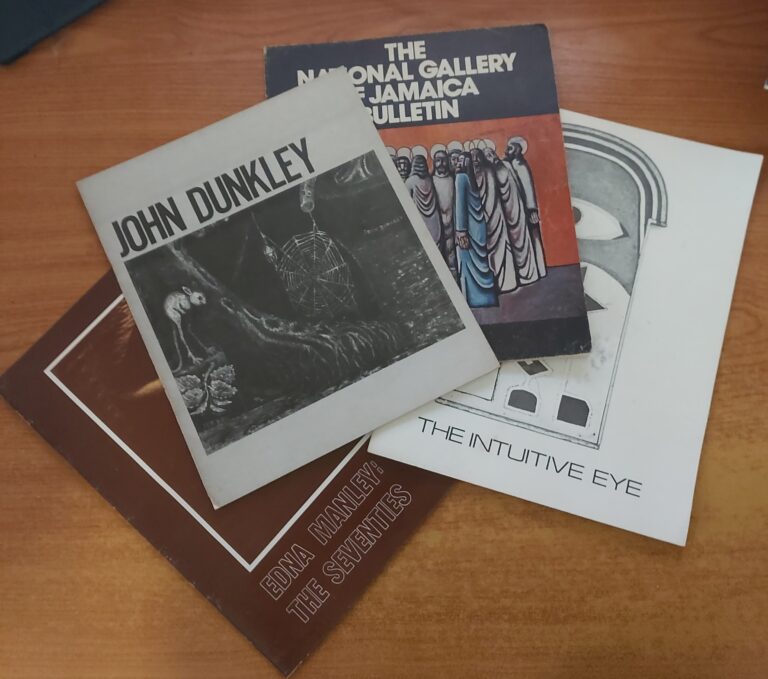The Atlantic World art fair – part 2

Last week, I sketched the context for the inaugural Atlantic World Art Fair, an international art fair virtually hosted on the Artsy platform, which features nine galleries from the Caribbean and Bermuda and 50 artists. The fair’s objectives are ambitious: “We aim to elevate the conversation on the contemporary art makers in the Caribbean, the Atlantic islands and the region’s wider diasporas,” while challenging the underrepresentation of the art from the region in the international art market.
The exhibitors include locally. well-established galleries, such as Gallery Alma Blou from Curaçao and Galerie Monnin from Port-au-Prince, and new, internationally focused ventures such as the TERN Gallery from Nassau and the Sour Grass curatorial agency from Barbados. The participants represent different positions and interests in the Caribbean art world and the exhibits are consequently quite diverse. The fair features work by well-known artists and new and emerging ones, and a healthy range of media and approaches, from more conventional painting and sculpture to experimental video. Contemporary photography is particularly well represented.
My own “pick” in the fair is a series of photographs of an inactive cruise ship, the Enchantment of the Seas, by the Trinidadian artist Abigail Hadeed, presented by Sour Grass. The ghostly, forlorn cruise ship in one of the images, which was photographed during misty, turbulent weather, contrast dramatically with the upbeat “blue sky, blue sea” vision of the Caribbean that is normally promoted in the tourism industry—an inspired, subtly provocative contemporary counterpart to J.M.W. Turner’s famous Slave Ship (1840) that speaks to our times. Hadeed’s photos powerfully evoke the crisis caused by the pandemic, which caused ships and crews to be stranded for months, and also allude to the general socio-cultural tensions associated with cruise shipping and tourism.
As a new, virtual initiative, the Atlantic World Art Fair wades into uncharted territory, of which the potential and limitations are not yet fully known. The Artsy platform, we are told, comes with a potential audience of two million which, of course, holds tremendous potential, but it appears that sales are slow. While the work presented is generally of a high quality, it looks like exhibitors opted for relatively “safe” selections, that would presumably sell more easily. But the resulting predictability and lack of truly provocative choices may work against attracting new audiences and collectors. Virtual engagement, furthermore, removes the social spectacle from the art fair, which circumvents the social hierarchies that are normally asserted at such events but also narrows its audiences, as one of the key attractions of visiting fairs is absent.
Online viewing, of the sort offered by the fair, is also still a second-rate substitute to engaging with the actual art, which is a particular challenge for art that is being promoted to new audiences, especially since little information on the featured artists or art works is offered on the site. This is partially compensated for by the robust accompanying programme of artists’ talks and panel discussions on YouTube, and the heavy promotion by the fair organizers, galleries and artists on Facebook and Instagram. Although from what I have observed, the traffic on these platforms is too low to suggest that new audiences are being reached and furthermore reflects a demographic with which the exhibitors and artists had already engaged.
With another week to go at the time of writing, it is not yet clear whether the fair will achieve its ambitious objectives or has been preaching to the choir. Even if the fair falls short of expectations, it is still a valuable exercise in regional network and capacity building that will provide a good foundation for future editions. As I alluded at the start of this review, last week, it also raises important questions about the interventions made by such initiatives, namely where the Atlantic World Art Fair really stands with regards to the troubling social dynamics that surround art fairs and the international art market.
During the Q&A session of one of the artists’ talks, a member of the audience asked: “how much responsibility artists/cultural producers have in how they engage with the art markets and art world systems that are built on, and continue to function as colonial frameworks?” The response from the panel was strongly dismissive, even indignant. Colonial legacies do, however, have significant implications for how the Caribbean art world, its institutions, and its markets function, in terms of how they are tied to social, political and economic status and power within and beyond the Caribbean. These issues are perpetuated if members of the Caribbean art world not to be prepared to consider their relationship to that dynamic. It is a question the Atlantic World Art Fair should actively entertain, if its organizers are indeed serious about presenting a new strategy for international visibility that challenges the old hierarchies and does not just seek admission to them.
The Atlantic World Art Fair continues until June 21 and the web address is: www.artsy.net/fair/atlantic-world-art-fair-2021.
Dr Veerle Poupeye is an art historian specialized in art from the Caribbean. She lectures at the Edna Manley College of the Visual and Performing Arts in Kingston, Jamaica, and works as an independent curator, writer, researcher, and cultural consultant.






